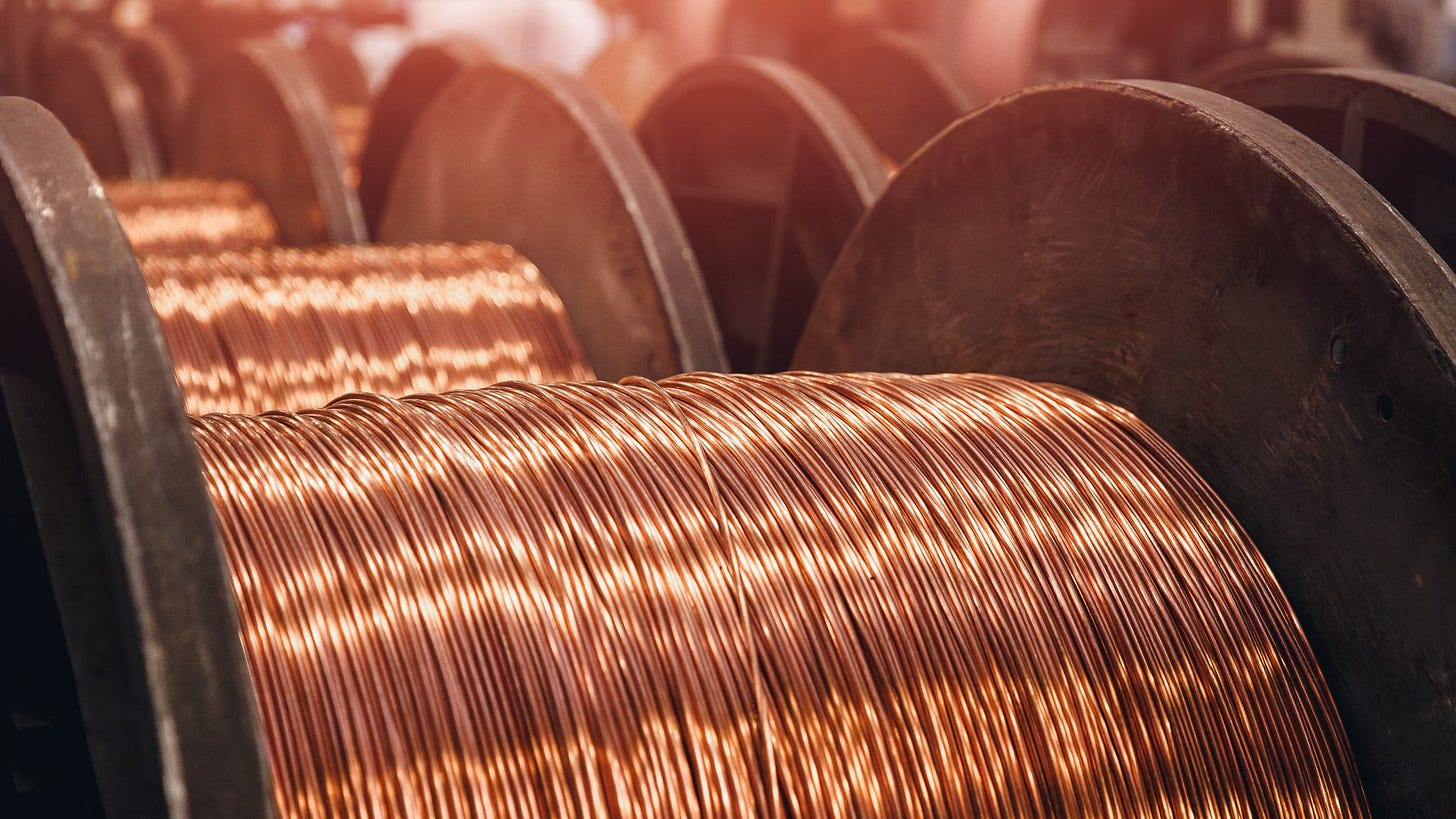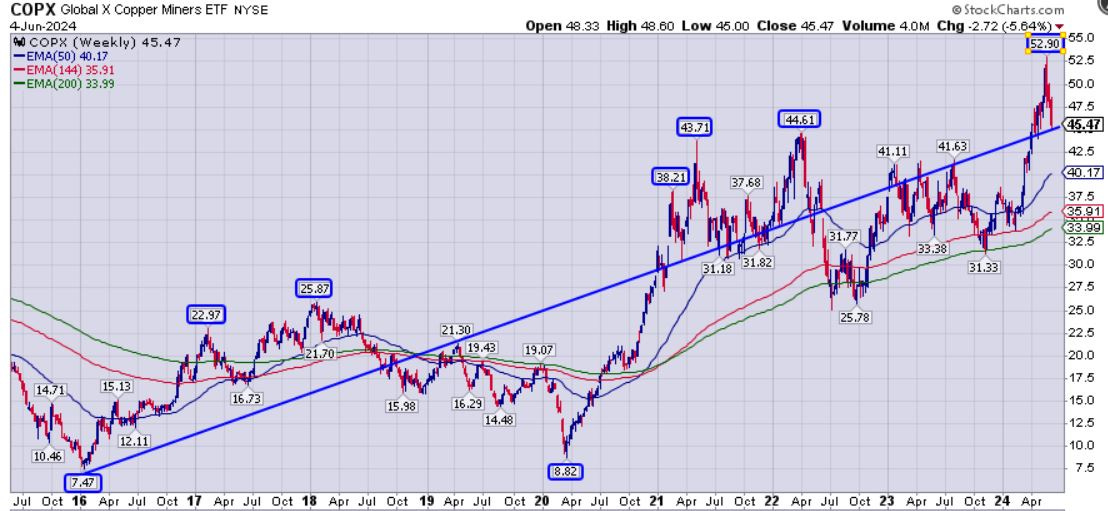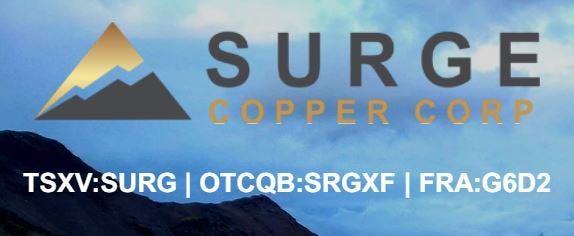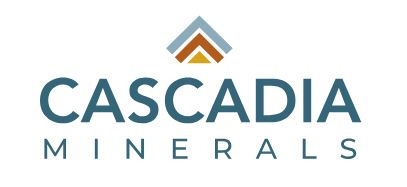Opportunities in Copper Explorers and Developers – Part 1
Excelsior Prosperity w/ Shad Marquitz – 06/09/2024
Kicking off this new series on opportunities in Copper Explorers and Developers, I’ll be peppering in 5 different copper juniors in this piece just to get the wheels turning. Accompanying embedded interviews are included, that we recently hosted over at the KE Report, where management teams unpack the value position in their respective companies. We’ll then be diving into a number of these more granularly down the road in future updates. Additionally, I can already think of a half dozen other copper juniors that will not be mentioned in this first piece for more articles to come. Hopefully this will be a fun and informative way to kick off this series.
(In full disclosure, I personally have portfolio positions in a few of these copper advanced exploration / early-stage development stocks that we are covering in this series. I’ve not been commissioned by these companies to write these articles on Substack. This is not investment advice, nor am I suggesting that anyone position in these stocks. Rather, this is simply an editorial on the value proposition these companies demonstrate to my mind, and why I got positioned in them over the last couple of years.)
As far as investing in junior pre-revenue copper stocks, it should be pointed out that this is one of the riskier subsectors and stage of resource stocks within the metals sector. Riding these equities through bull markets and bear markets is definitely not for the faint of heart, and the stock price action can be wildly volatile. This, of course, also means that with that kind of volatility comes multiple waves of price rises and then price declines to potentially capitalize on for either swing-trading or position-trading. This volatility also provides ample opportunities to accumulate positions for the longer-term, by layering into a position over several buying tranches. This layered approach to scaling into a position, via multiple partial purchases, is a great way to smooth out the volatility, while building a good cost-basis over time.
With all of that said, let’s get into it…
Copper has really been generating the headlines lately for the fundamental picture surrounding the supply and demand picture as it relates to all of the red metal that will be needed to electrify the developing world, wire in all the electricity to EV charging stations, crypto mining hubs, and A.I. data centers. Additionally, there are plenty of weekly and monthly narratives surrounding how countries like China and the US growth and economies affect the picture. It is nice to see a broader discussion happening in the marketplace by generalists, not just about the growing demand for copper, but also the question finally arising of where all the mined supply will come from?
Copper pricing has always been volatile and remains so to this day. Despite this wild journey, over the last 8 years, after putting in a major low for this cycle in 2016 down at $1.936 per pound, it has been in a general uptrend. Yes, there were powerful moves blasting up to very high levels on each rally, followed by gut-wrenching corrections diving down hard, and extreme moves in both directions. Just last month in May of 2024 copper made new all-time highs once again, eclipsing the prior record high price tagged back in early 2022. It is very likely that this cycle is not over yet, and copper has even higher price levels to make in the years to come, but the trend has been up and to right as a general takeaway since those low levels sub $2 in both 2016 and during the pandemic market crash of 2020.
Some technicians like to start measuring from the major low in pricing, which would have been the $1.936 level from early 2016, and others note a W-shaped “double bottom” referencing that 2016 price, and the retest at $1.972 from the pandemic crash low in the spring of 2020. Regardless, of which starting level people use, the point has been clear… copper has never been anywhere down close to that $2 level ever again, and spent the better part of the last few years in the $3s and $4s. Then there was that pop to a new all-time high in 2021 at $4.888, and then a pop to another new all-time high again in 2022 to $5.04. The recent new all-time high, just put in last month in May of 2024 at $5.199 kept this winning streak alive. Again, there are likely to be even higher levels attained before this cycle is completed, (unless people believe that was it for the red metal’s rise and that everything is now fairly priced for the future at $4.48 a pound on Friday’s close).
We’ve seen this general price rise in copper, spill over into demand for the senior copper mining stocks held inside of the Global X Copper Miners ETF (COPX), since it put in it’s major low back in early 2016 at $7.47. Again, it did come back down in a W-shaped double-bottom pattern, just like copper did, to the 2020 pandemic crash low of $8.82. That was technically a much higher high than the 2016 major low, and the result afterwards was the resumption of the uptrend in (COPX). This ETF filled with the big boy copper miners just ran up again last month in May of 2024 and put in it’s own all-time high at $52.90. That is a 700% or 7x move in COPX from the $7.47 low to the $52.90 high over the last 8 years.
2 new ETFs were launched in the copper mining sector; the Sprott Junior Copper Miners ETF (COPJ) a little over a year ago, and then more recently the Sprott Copper Miners ETF (COPP). Since there is at least a year’s history in (COPJ), then we’ll also post a chart for it down below, just to show the torque it had in the recent move higher in the copper space. We should also note that since it is focused on the next rung down in copper stocks (still not really weighted to what we’d call traditional “juniors” but smaller cap stocks than what is in COPX or COPP). It does show the appetite for the more speculative spectrum of juniors in the copper stocks [note the increasing volume, and that it got overbought on the recent rallies when looking at the Relative Strength Index (RSI).
Personally, I’ve been positioned in COPJ for the last few months, having gotten positioned on March 6th around $18.67, so I’m biased in that sense, and still hold that position in this ETF in my own portfolio. For the years leading up until this year, I had throttled back my exposure to junior copper stocks, having sold about 8 prior positions in the climax in pricing back in 2021 rally, and then really only intermittently trading COPX for position-trading over the last few years. COPJ seemed interesting to me in that I like a number of other Sprott ETFs, and I’ve been animated by getting more exposure to copper juniors at this point in the cycle.
My thesis is that there is now enough investor interest circulating, that it should start bringing more capital further down the risk curve an into the junior copper stocks.
COPJ is a fine trading vehicle, but I’ve been more focused over the last few months on really looking for compelling risk/reward setups in the junior copper explorers and developers. I’ve found about 2 dozen interesting stories, and there are definitely some great stocks that aren’t going to be included in this first article, just due to bandwidth and space constraints. I think most investors will appreciate the more recent moves higher we’ve seen in developers like Regulus Resources, or from new copper discoveries in Hercules Silver and more recently in Bravo Mining, that have been widely followed by market participants as they piled into these stories.
In this article, I’m going to flag a few of the copper junior explorers and earlier-stage developers that haven’t received quite as much attention (yet), but that have solid management teams, compelling projects, and that have good work programs and newsflow on tap for 2024 and beyond. (Again, I have positions in 4 of the 5 companies, and am strongly considering getting positioned in the 5th company.)
With regards to Arizona Sonoran Copper Company (TSX:ASCU) (OTCQX:ASCUF), what attracts me to this company is the quality management team, compelling jurisdiction of Arizona (which is one of the key states for copper mining and exploration in the US), and the economics returned from the Pre-Feasibility Study (PFS) back in February of this year. This project is very near Robert Friedland’s copper project in Arizona with Ivanhoe Electric, and while ASCU has amassed a compelling project with solid economics, it is trading at a fraction of the value compared to their more well-known neighbors.
I’ve been chatting with CEO George Ogilvie, President and CEO of Arizona Sonoran Copper for over 2 years now, since early 2022. Over that time I’ve followed along with the company’s exploration success and derisking of the project through metallurgical work and early-stage mine planning for the economic studies. A few weeks back, on May 20th, George joins me over at the KE Report to recap the economic studies and development work completed to date and the work plan to come in 2024 and early 2025 at the Cactus Project.
The Company put out a Pre-Feasibility Study (PFS) at the Cactus Project in February, that demonstrated an initial Life of Mine of 21 years, recovering 1,153 k tons or 2.31 billion pounds of Copper LME Grade A cathode onsite via heap leach facility and SXEW. That gave the economics on the project a post-tax Net Present Value (“NPV”) of $509 million (CA$687 million) using an 8% discount rate and an internal rate of return (“IRR”) of 15.3% and using a $3.90/lb flat long-term copper price. There would be total revenues of $9.0 billion over 21 years, and post-tax unlevered Free Cash Flow of $2.4 billion, with All-In Sustaining Cost (“AISC”) of $2.34/lb. George mentioned that with sensitivities close to today’s copper prices, if we assumed $4.50/lb. copper prices it jumps up to an NPB of $970 million and an IRR of 22%.
However, it should be noted that all the drilling the company has done at the MainSpring Property, has not been included in this study yet, and there will be a Preliminary Economic Assessment coming out in Q3 of this year. That study will also review the optionality to improve the process with the investment by Nuton LLC (a wholly-owned subsidiary of Rio Tinto) and subsequent option to Joint Venture (“JV”) the Cactus Project to Nuton LLC using their proprietary leaching recovery methods. After that PEA, then all of the ongoing infill drilling at MainSpring and also deeper at Cactus West looking for more sulphide resources will all factor into a larger combined PFS for the whole Cactus Project, Parks Salyer, and Mainspring, both as a stand-alone project, and in concert with the Nuton leaching technology.
We also discussed some optionality around developing MainSpring as an open pit providing operational flexibility and gaining lower cost access to the Parks/Salyer deposit, so that bringing MainSpring into the mine plan potentially improves operational and financial synergies within the Cactus Project. This idea will be explored further in these upcoming economic studies, and as more definition and infill drilling is completed in the gap zone between the projects. George also provides some updates on permitting for the project, and the importance of it being on private land to help expedite the process.
Leif Nilsson, CEO & Director of Surge Copper (TSX.V:SURG – OTCQX:SRGXF), joined me on May 30th over at the KE Report, for a comprehensive update on the ongoing exploration and development work at their flagship copper-molybdenum-silver-gold Berg Project in British Columbia.
We start off having Leif outline the key economic metrics from the PEA released last summer, for a sense of the size and scale of the Project, and how it stacks up to other large copper development assets in Canada.
Base case after-tax NPV8% of C$2.1 billion and IRR of 20% based on long-term commodity price assumptions of US$4.00/lb copper, US$15.00/lb molybdenum, US$23/oz silver, and US$1,800/oz gold plus foreign exchange of 0.77 USDCAD
30-year mine life with total payable production of 5.8 billion pounds (2.6 million tonnes) of copper equivalent (CuEq), including 3.7 billion pounds (1.7 million tonnes) of copper
Updated mineral resource estimate includes combined Measured & Indicated resource of 1.0 billion tonnes grading 0.23% copper, 0.03% molybdenum, 4.6 g/t silver, and 0.02 g/t gold, containing 5.1 billion pounds of copper, 633 million pounds of molybdenum, 150 million ounces of silver, and 744 thousand ounces of gold, plus an additional 0.5 billion tonnes of material in the Inferred category.
This leads into a discussion on how the economics would change with sensitivities to current metals prices, and this is available on page 5 of their corporate slide deck:
https://surgecopper.com/site/assets/files/5875/2024-06-01_-_surg_-_corporate_presentation.pdf
We also mention that the critical minerals component of the copper and moly mineralization gives the company some optionality when looking at raising capital for the development of the project down the road.
Next we dig into to the news released April 10th, about the planned technical work programs in support of an upcoming Pre-Feasibility Study (PFS), commencing in the coming weeks and extending through the summer field season. Leif outlines some of these initiatives for further derisking the Berg Project through metallurgical testing, environmental baseline studies, geochemistry and geotechnical work, and then more surface mapping and sampling to advance the high-priority Berg SW Target.
I was somewhat familiar with the prior iteration of this company under a different management team as CopperBank Resource Corp, but had always brushed it aside as a lower grade copper deposit in my mind. However with copper prices ripping higher, my thesis was that many projects with pounds in the ground would start getting rerated higher as their economics improved. I took a meeting with Paul Harbidge President, CEO & Director and Angela Johnson VP Corp Dev. & Sustainability, in Washington D.C. at the Energy Transition Metals Summit just a little over a month ago, and came out of the meeting extremely impressed…. So much so that I went out and took out an initial position in the company in the week following the conference.
On June 6th, Graham Richardson, CFO of Faraday Copper (TSX.V:FDY – OTCQX:CPPKF) joined us over at the KE Report, to provide an overview of the current resource at the 100% owned Copper Creek Project in Arizona.
The discussion highlights include reviewing the 4.2 billion pound copper resource, the results from the 2023 PEA, and the Company’s current drill program. The drilling will be focused on expanding the high-grade portion of the resource in the underground portions of the Keel and American Eagle deposits, as well as making new discoveries at surface to feed the multiple open pits with so many already defined like Copper Prince, Old Reliable, Globe, Child’s Aldwinkle, Mammoth, Bald, and the new Area 51 discovery. We also dive into the company’s experienced team and significant stakeholders, as well as the upcoming drill results and corporate strategy aimed at increasing the economic value of the asset.
I’m including a company with 3 different projects (one copper, one silver, and one gold) that I’ve been following and trading for a long time now, Metallic Minerals (TSX.V:MMG – OTCQB:MMNGF). I initially got interested in this company back almost a decade ago when it was called Monster Mining, because of the silver assets being explored right next to Alexco Resource (now owned by Hecla Mining) in Keno Hill. The company also has gold alluvial projects in the Klondike gold district, that they are creating royalties on for partners to earn-in on (with the first one being Parker Schnable of the TV acclaimed Gold Rush series). However, over time, my interest has shifted more and more to their La Plata Copper-Silver project near Durango, Colorado as the most compelling of the 3 projects.
On April 17, Scott Petsel, President of Metallic Minerals, joins us to review both the assay results from the 2023 drill program at the La Plata Copper Project in Colorado; and the inaugural resource at the Keno Silver Project in the Yukon.
We lead off discussing the recent news unpacking the 2023 exploration results at that La Plata Copper-Silver Project that was funded by a May 2023, 9.5% strategic equity investment by Newmont Corporation. In the 4 drill holes over 4,530 meters there were the dual objectives of expanding on the 1.21-billion-pound copper and 17.6-million-ounce silver inferred mineral resource, and defining the controls to higher-grade mineralization as seen in drill hole LAP22-04. As announced in February 2023, LAP22-04 was a continuously mineralized discovery drill hole that intercepted 816 m grading 0.41% recovered copper equivalent (“CuEq”), with significant widths exceeding 0.5% to 0.7% Cu. The intersection also included higher grade zones exceeding 1% Cu with precious metals grades of up to 11.5 g/t Au+PGE and 47 g/t Ag.
Scott outlined that the 4 holes drilled by the exploration team did follow up on the area near the high-grade intercept hole # LAP22-04, and that three of four holes intercepted continuous porphyry style Cu-Ag-Au-PGE mineralization over 500 m in width at 0.3% Cu including significant intervals exceeding 0.5% to 0.7% CuEq with associated Ag, Au and PGEs. Drill hole LAP23-05 intersected 909 m of continuous mineralization from surface grading 0.26% CuEq over the entire hole length, with a 550 m wide higher-grade zone. We discuss the variability in the grade and intensity of the mineralization in all drill holes, based on the density of veining and concentration of associated sulphides that carry the copper, silver, gold, platinum, and palladium. The deposit remains open to expansion at depth and along trend. Defining the geometry of these higher-grade porphyry units and alteration zones is an important focus of follow up drilling at the Allard resource area in 2024.
Graham Downs, President and CEO of Cascadia Minerals (TSXV: CAM) (OTCQB: CAMNF), joined me last week on June 7th for a comprehensive introduction to this new gold and copper explorer focused on 3 projects in the Yukon and one project in British Columbia, Canada.
We start off having Graham outline how the company came together, as some of their copper & gold projects were spun out of ATAC Resources, when Hecla Mining (NYSE: HL) took over their prior company. Then we recap some of the work the exploration team did on their Catch Property in the Yukon last season, and discuss the follow up drilling planned in 2024. In addition, there will be some drilling on the PIL Property in British Columbia later this exploration season.
We discuss some of the key stakeholders in Cascadia Minerals, such as Hecla Mining, Barrick Gold, and activist investor Michael Gentile, and the strong management stake, as well as the tight share structure, and that the company will be cashed up for this exploration season, and may do some early stage ground work on other properties. I’m considering taking out a position in this company soon.
That’s for this first installment of Opportunities In Junior Explorers and Developers.
Thanks for reading and may you have prosperity in your trading and in life!
- Shad












